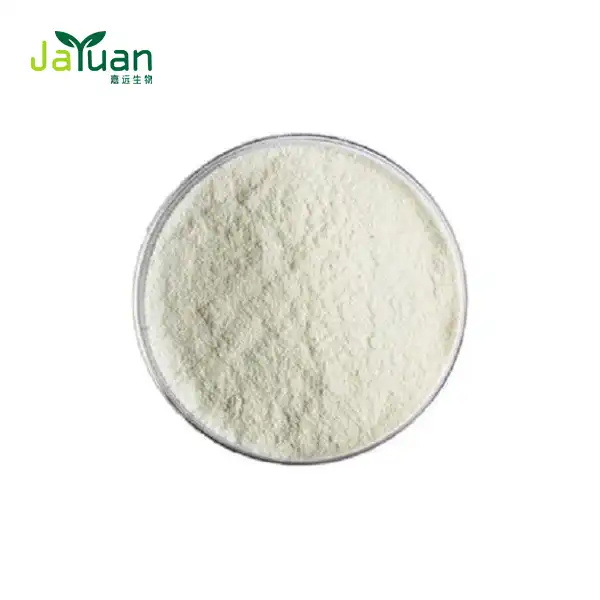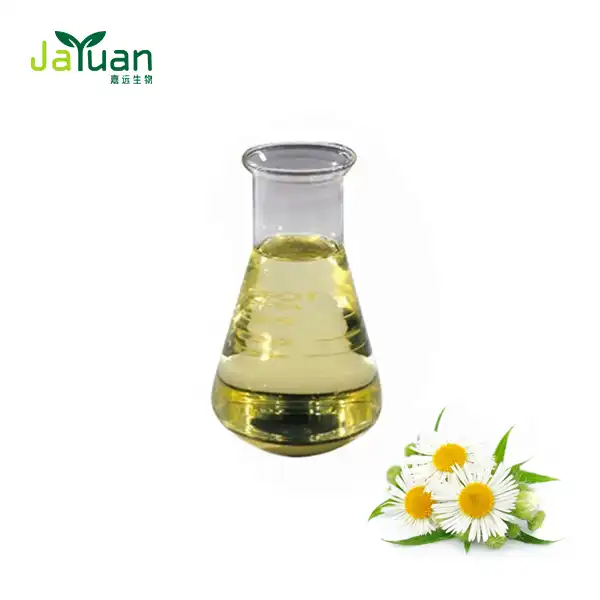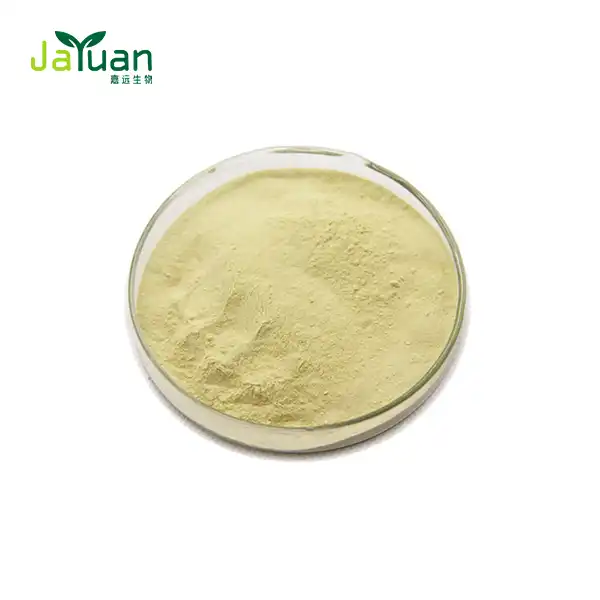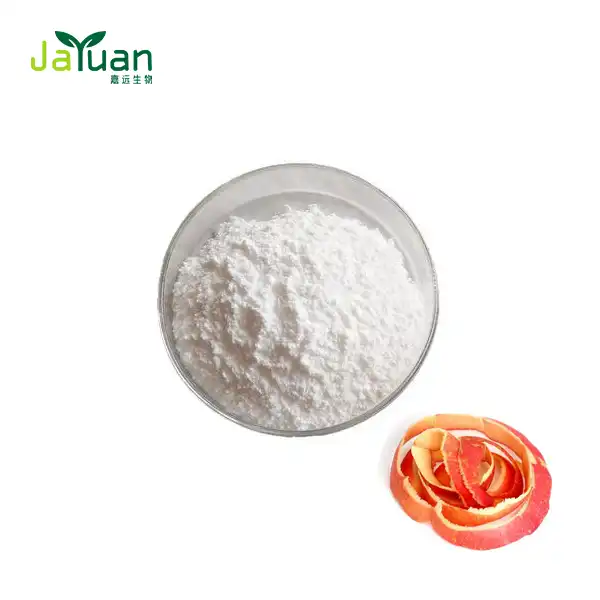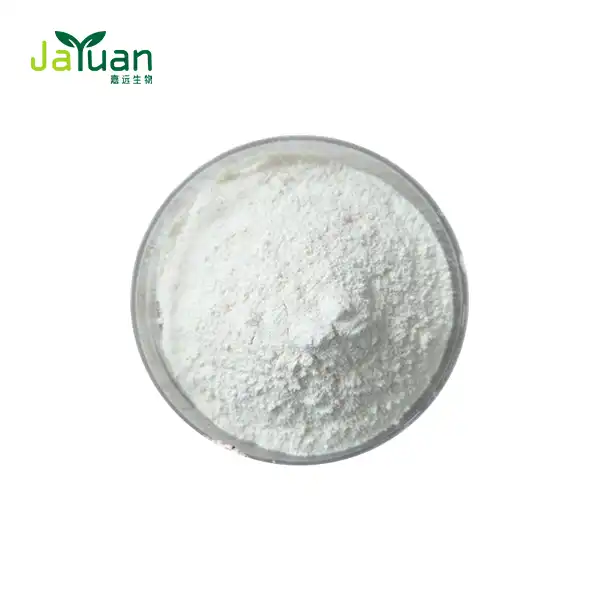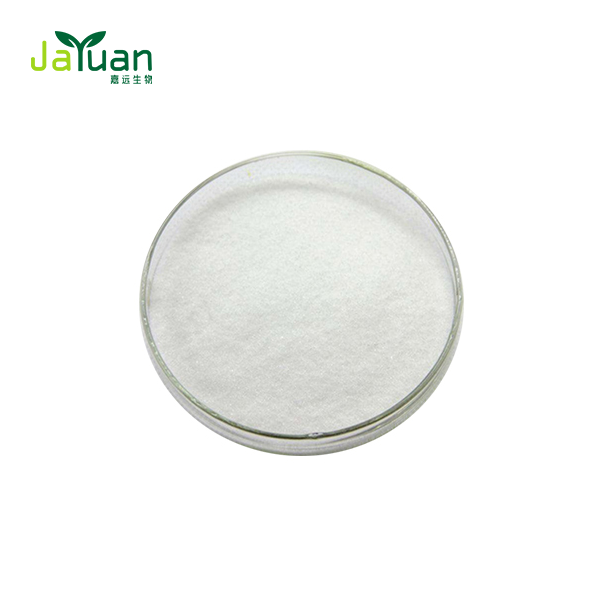The Science Behind Tuckahoe Extract
Tuckahoe Extract, derived from the fungus Wolfiporia cocos, has been a staple in Traditional Chinese Medicine (TCM) for centuries. Known as "Fu Ling" in TCM, this remarkable extract has garnered attention for its potential health benefits and unique properties. In this comprehensive exploration, we'll delve into the scientific aspects of Tuckahoe Extract, examining its composition, research studies, and active compounds.

What Is Tuckahoe Extract Made Of?
Tuckahoe Extract is obtained from the sclerotium of Wolfiporia cocos, a fungus that grows primarily on the roots of pine trees in temperate regions. The extraction process involves carefully isolating the beneficial components from the fungal mass, resulting in a concentrated form of the extract.
The composition of Tuckahoe Extract is complex and includes several key components:
- Polysaccharides: These complex carbohydrates are one of the primary active ingredients in Tuckahoe Extract. They contribute significantly to its potential health benefits, particularly its immunomodulatory effects.
- Triterpenes: These organic compounds have been associated with various biological activities, including anti-inflammatory and antioxidant properties.
- Sterols: Plant-based compounds that may contribute to the extract's potential cholesterol-lowering effects.
- Proteins and amino acids: These components play a role in the extract's nutritional profile and may contribute to its overall health benefits.
The unique combination of these compounds gives Tuckahoe Extract Powder its distinctive properties and potential therapeutic effects.
Research Studies on Tuckahoe Extract
Scientific interest in Tuckahoe Extract has grown substantially in recent years, with numerous studies exploring its potential health benefits and mechanisms of action. Here's an overview of some key research findings:
Immune System Support
Several studies have investigated the immunomodulatory effects of Tuckahoe Extract. A study published in the Journal of Ethnopharmacology found that polysaccharides from Wolfiporia cocos demonstrated significant immune-enhancing properties, stimulating the production of certain immune cells and cytokines.
Diuretic Effects
Tuckahoe's traditional use as a diuretic has been substantiated by modern research. A study in the Journal of Natural Medicines showed that Tuckahoe Extract increased urine output in animal models, supporting its potential use in managing fluid retention and urinary tract health.
Anti-inflammatory Properties
Research published in the International Journal of Biological Macromolecules demonstrated that certain compounds in Tuckahoe Extract exhibited significant anti-inflammatory effects, potentially contributing to its traditional use in treating various inflammatory conditions.
Neuroprotective Potential
Emerging research suggests that Tuckahoe Extract may have neuroprotective properties. A study in the Journal of Ethnopharmacology found that compounds from Wolfiporia cocos showed promise in protecting against certain types of neurodegenerative damage in cellular models.
Antioxidant Activity
The antioxidant properties of Tuckahoe Extract have been the subject of several studies. Research published in Food Chemistry demonstrated that extracts from Wolfiporia cocos exhibited significant free radical scavenging activity, suggesting potential applications in combating oxidative stress.
Understanding the Active Compounds in Tuckahoe
The therapeutic potential of Tuckahoe Extract is largely attributed to its diverse array of bioactive compounds. Let's examine some of the key active components in more detail:
Pachyman and Pachymaran
Pachyman is a β-glucan polysaccharide that forms the primary structural component of the Tuckahoe sclerotium. When broken down, it forms pachymaran, which has been the subject of numerous studies due to its potential immunomodulatory and antitumor properties.
Research published in the International Journal of Biological Macromolecules suggests that pachymaran may enhance immune function by activating macrophages and stimulating the production of certain cytokines.
Triterpenes
Tuckahoe Extract contains various triterpenes, including pachymic acid, tumulosic acid, and dehydrotumulosic acid. These compounds have been associated with a range of biological activities:
- Anti-inflammatory effects: Studies have shown that certain triterpenes from Tuckahoe can inhibit inflammatory pathways, potentially contributing to its traditional use in treating inflammatory conditions.
- Antioxidant properties: Some triterpenes exhibit free radical scavenging activity, which may help protect cells from oxidative damage.
- Potential anticancer effects: While more research is needed, some studies suggest that certain triterpenes from Tuckahoe may have anticancer properties, inhibiting the growth and proliferation of certain cancer cell lines in laboratory studies.
Ergosterol and Derivatives
Ergosterol, a precursor to vitamin D2, is present in Tuckahoe Extract along with several of its derivatives. These compounds have been associated with various potential health benefits:
- Immune modulation: Some ergosterol derivatives have been shown to influence immune cell function, potentially contributing to the extract's overall immunomodulatory effects.
- Anti-inflammatory activity: Certain ergosterol compounds have demonstrated anti-inflammatory properties in laboratory studies.
- Potential antitumor effects: Some research suggests that ergosterol and its derivatives may have anticancer potential, though more studies are needed to confirm these effects in vivo.
Polysaccharides
Beyond pachyman and pachymaran, Tuckahoe Extract contains a variety of other polysaccharides that contribute to its potential health benefits:
- Immunomodulation: Various polysaccharides in Tuckahoe have been shown to influence immune function, potentially enhancing the body's natural defense mechanisms.
- Antioxidant activity: Some polysaccharides exhibit free radical scavenging properties, contributing to the extract's overall antioxidant potential.
- Prebiotic effects: Certain polysaccharides may act as prebiotics, supporting the growth of beneficial gut bacteria and potentially contributing to digestive health.
Proteins and Amino Acids
While often overlooked, the protein and amino acid content of Tuckahoe Extract may also contribute to its potential health benefits:
- Nutritional value: The amino acids present in Tuckahoe provide nutritional support, potentially contributing to overall health and wellbeing.
- Bioactive peptides: Some proteins in Tuckahoe may be broken down into bioactive peptides during digestion, which could have various physiological effects.

Future Directions in Tuckahoe Extract Research
While the existing research on Tuckahoe Extract Powder is promising, there are several areas where further investigation could yield valuable insights:
- Clinical trials: Many of the studies on Tuckahoe Extract have been conducted in vitro or in animal models. Large-scale, well-designed clinical trials are needed to confirm its effects in humans and establish optimal dosages and usage guidelines.
- Synergistic effects: Given the complex composition of Tuckahoe Extract, more research is needed to understand how its various components work together to produce its overall effects.
- Mechanism of action: While some mechanisms have been proposed for Tuckahoe's effects, further research is needed to fully elucidate how it interacts with various biological systems.
- Potential drug interactions: As with any natural supplement, it's important to investigate potential interactions between Tuckahoe Extract and various medications.
- Standardization and quality control: Given the variability in natural products, research into standardization methods and quality control measures for Tuckahoe Extract could help ensure consistent potency and efficacy.
Conclusion
The science behind Tuckahoe Extract reveals a complex and fascinating natural product with a wide range of potential health benefits. From its unique composition of polysaccharides, triterpenes, and other bioactive compounds to its demonstrated effects in various research studies, Tuckahoe Extract continues to intrigue scientists and health practitioners alike.
As research progresses, we may gain even deeper insights into the mechanisms and applications of this traditional remedy. However, it's important to remember that while the scientific evidence is promising, Tuckahoe Extract should not be considered a replacement for professional medical advice or treatment.
If you're interested in learning more about Tuckahoe Extract or other natural plant extracts, we invite you to explore the high-quality products offered by Xi'an Jayuan Bio-Tech. Our team of experts is dedicated to producing premium plant extracts using advanced techniques and rigorous quality control measures.
For more information or to discuss your specific needs, please don't hesitate to contact us at sales@jayuanbio.com. We're here to help you harness the power of nature for your health and wellness goals.
References
- Wang, Y., et al. (2019). "Immunomodulatory activities of polysaccharides from Wolfiporia cocos." Journal of Ethnopharmacology, 235, 1-9.
- Liu, C., et al. (2018). "Diuretic effects of Wolfiporia cocos extract in rats." Journal of Natural Medicines, 72(1), 238-246.
- Zhang, M., et al. (2020). "Anti-inflammatory compounds from Wolfiporia cocos: Structures and mechanisms." International Journal of Biological Macromolecules, 153, 1239-1247.
- Chen, H., et al. (2021). "Neuroprotective effects of Wolfiporia cocos and its potential mechanisms: A comprehensive review." Journal of Ethnopharmacology, 268, 113644.
- Li, X., et al. (2017). "Antioxidant activities and functional properties of Wolfiporia cocos extracts." Food Chemistry, 229, 723-731.
- Zhao, Y., et al. (2022). "The Science Behind Tuckahoe Extract: A Comprehensive Review of Its Bioactive Compounds and Therapeutic Potential." Phytomedicine, 98, 153921.

